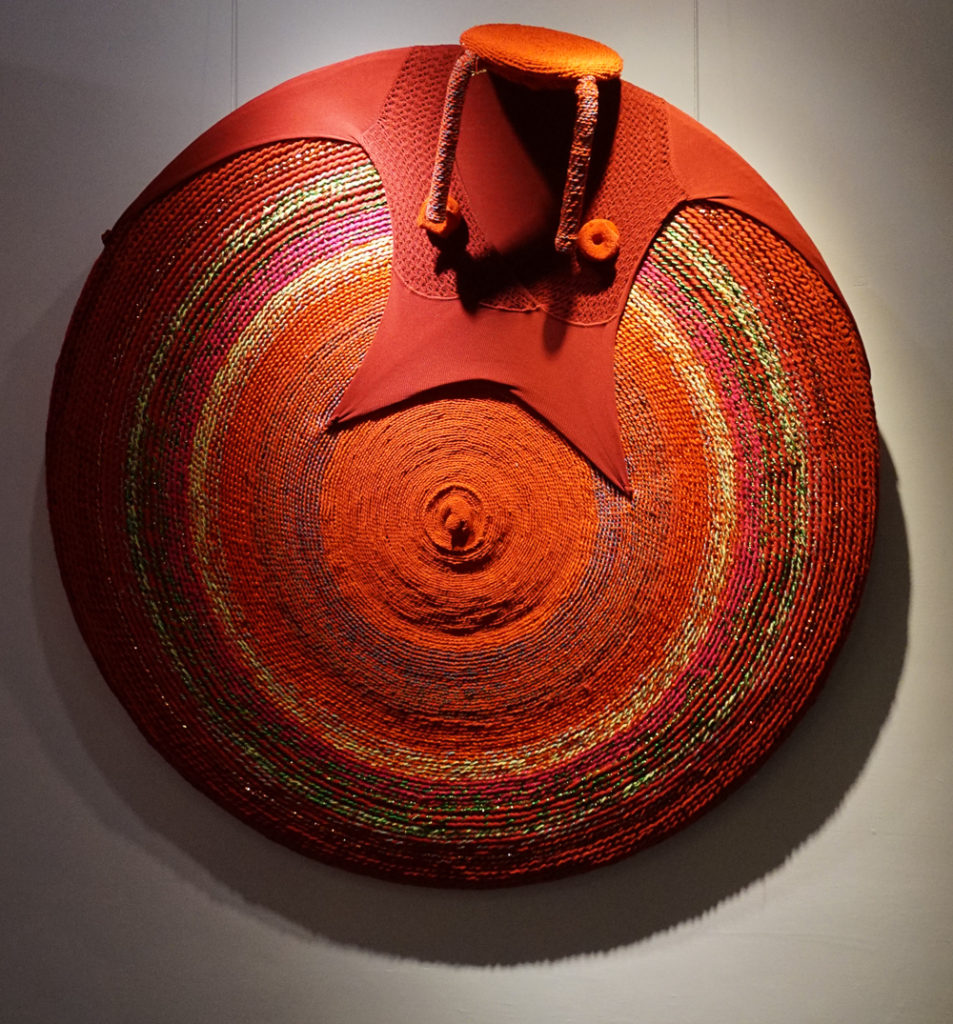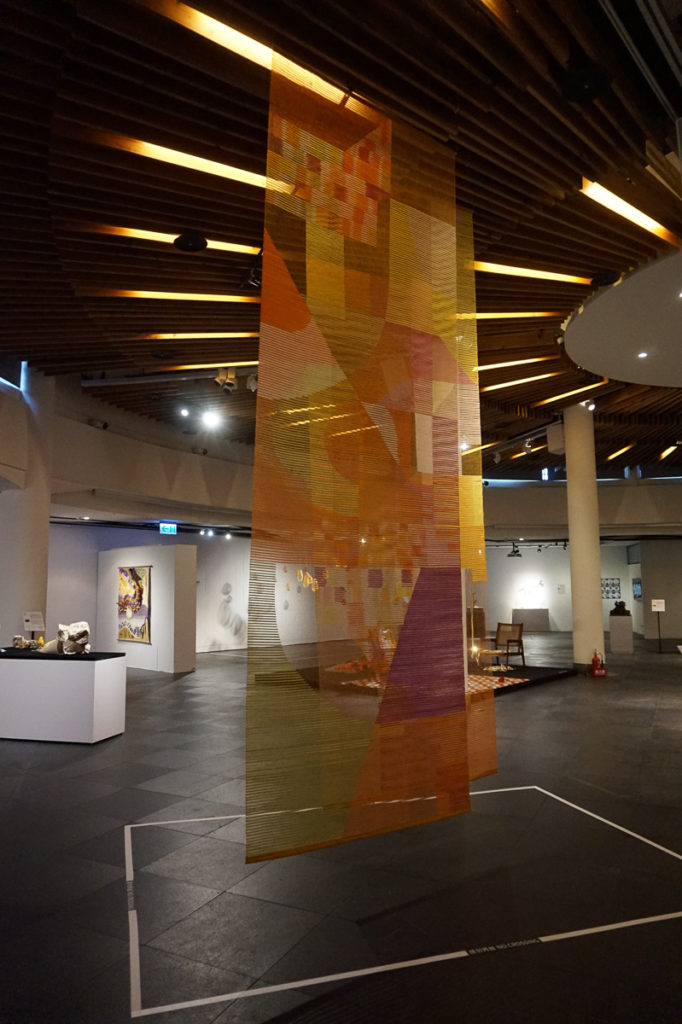Ming Turner reflect on an important new exhibition of female artists from Taiwan, Philippines, USA and UK.
“Womensemble” is an exhibition that explores the self-affirmation and subjectivity of women artists, and the diversity of their work since the 1970s when the feminist movement began. “Womensemble” has invited 23 female artists from Taiwan, the Philippines, the USA, and the UK to work in concert with a gathering of female artists from the 1970s’ feminist movement. Through contemporary artworks, it demonstrates interpretations of both the lives and the social issues experienced and observed by female artists from different cultures and different generations.
This exhibition comprises three categories: “The Flow of Poetry: Fairy tales and Symbolism”, “The Flow of Weaving: Female Subjectivity in Folklore Culture”, and “The Flow of Ideology: Body Politics and Social Issues”. The materials and techniques used by the artists are many and varied, and include natural and recycled materials, clay, fiber, video, new media, mixed media, and interactive installations. The artworks cover subjects encompassing family, kinship, immigrant women, and cultural identity, as well as issues of femininity, and social observations and critiques. Thus, this exhibition both brings together vital artworks of contemporary female artists and serves as a platform for conversation and communion. Through these fine artworks, it builds a bridge between the interdisciplinary nature of contemporary art and the experimentality of craft creation, while creating a medium for the audience to reflect on the relationships between the self, the other, and society.
The Flow of weaving: Female subjectivity in folklore culture
Fiber crafts are constructed upon sewing, weaving, knitting techniques and more, commonly using wool. Traditionally, they are classified as “crafts,” rather than “artworks” which are displayed in a fine art museum. Beginning in the 1970s, however, they have now been presented in different ways and on a larger scale, thanks to the efforts and creativity of female artists. Therefore, fiber crafts have transformed into fiber art, breaking away from outdated confinements. Today, fiber art is mostly presented in the form of installation, and the subjects discussed include gender politics, and women’s narrations. Rather than merely home décor, fiber art constitutes an element of the tapestry of diverse, multi-themed contemporary art.
In this section, I showcase a series of artworks which take folklore culture as their central theme, and which are made with, or related to, fiber. After becoming popular in the late 1960s in the midst of the feminist art movement, fiber has been one of the most common creative mediums used by female artists, and has since become a recognised genre of art. In this category, the artworks on display separate themselves from the binary opposites approach of the critiques of the early feminist movement, while exploring social issues, reinterpretations of local culture, and the relationship between the self and family. The participating artists include Labay Eyong, Kang Ya-chu, Deng Wen-jen, Pan Ping-yu, and Liv Aanrud (US).
Labay Eyong uses found objects and hand-weaving to show Taiwanese indigenous images and culture, based on a set of modern art aesthetics. Memory Barcelona and Drain, two works of fiber art, both inherit and transform the Taroko people’s weaving traditions and techniques, and reveal the artist’s new situation since she became a mother. She needs to find time to make art, in addition to looking after her child. Drain, in particular, indicates that, instinctively, all mothers tend to devote themselves entirely to their children.
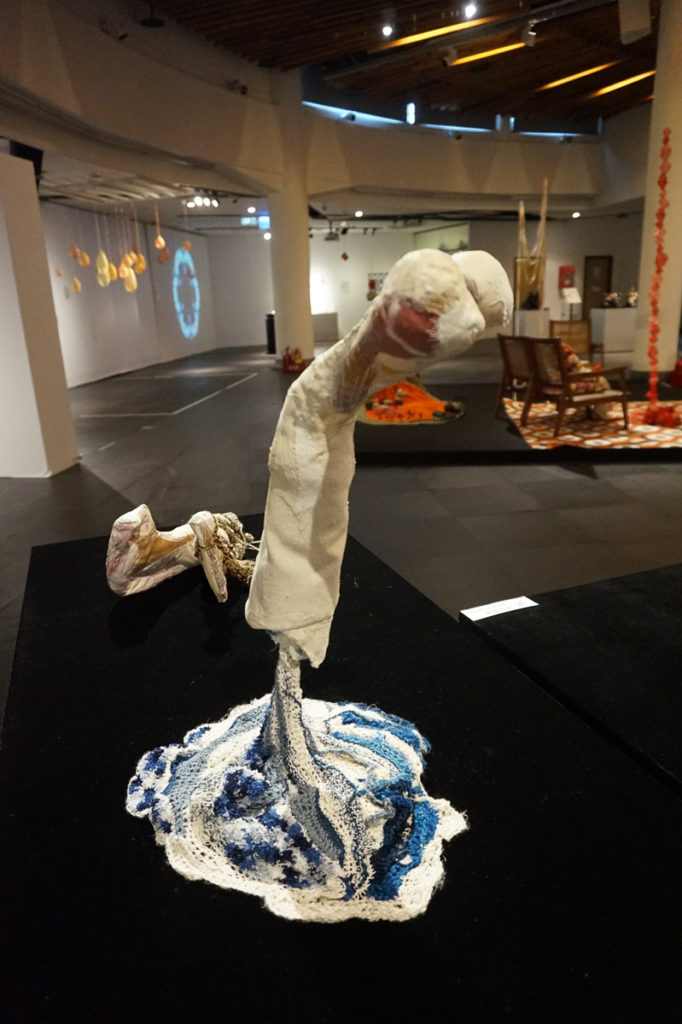
Kang Ya-chu, Deep Ridge of the Body Forest, 2017, Various fabrics, threads, cotton, hemp, wool, silk, silkworm cocoons, natural plant fibres, natural dyes, 28x30x52cm
For many years, Kang Ya-chu has used fiber and mixed media to make art. The series on display here is Deep Ridge of the Body Forest, in which the artist shares her experiences of taking Chinese medication. She uses various materials such as fiber, plants, and dye to make images of skeletons and Chinese herbs. Sustainability Lost, a large two-dimensional fiber artwork, resonates with Hou I-ting’s creations which present issues of the textile industry. Sustainability Lost discusses how the production of fast-fashion clothes may bring additional pollution and have an impact on our environs. Deng Wen-jen also focuses on fiber art. She uses embroidery, tapestry and plant dye, as well as weaving, stitching and entwining techniques, to replace painting, in which she excels. Deng’s works are representations of the history of the Siraya. Both Soulangh 1626-2017 and Taiwan Expedition 1867-1874 were created in 2017 during the artist’s residency at Soulangh Artist Village in Taiwan. During that time, she learned about her mother’s indigenous Pingpu lineage. Inspired by this new information, she used sugar cane leaves and other local plants provided by Soulangh farmers to create these two gigantic works.

Pan Ping-yu, Taiwanese Fusion- Si Chuan Flavoured Beef Noodle Soup, 2017, Mixed media, Dimensions variable
Through the representation of food, Pan Ping-yu’s fiber art series, Family Recipes, deals with the emotions of missing her home, but it also explores the family, and other historical and cultural issues through life through culinary experiences. As one example, the famous “Sichuan-style braised beef noodles” shown in this series is a combination of food introduced from another region with local flavors. Thus, Family Recipes also discusses cultural integration in Taiwan. Despite a busy life, American artist Liv Aanrud finds relaxation for the mind through weaving, and the human figures in her works embody her artistic self. The artist used a myriad of colorful cloth strips to make Sleep of Sorrow on hemp cloth. Slowly, the contours and colors of the images become clear, as she weaves in and out. Sleep of Sorrow shows a woman in-between sleep and her dreams. On the left of the picture, she is in a deep sleep, while on the right, the woman seems to be sleep-walking. The owl and the moon in the background suggest that this is a dream. While capturing the tranquility of sleep, this artwork indicates that sleeping could be a means of escaping the worries and troubles we face in this world.
The flow of ideology: Body politics and social issues
The human body has long been a major topic in western art. Since the Renaissance, the bodies of women, men, elders, adolescents, and children have all been portrayed by artists. Since the 1960s, the body has remained a crucial theme for feminist artists, and they are particularly interested in challenging the idea of “the socialized female body,” while attempting to break down the body concepts shaped by gender rules. Based on the body, the differentiation and identification of sex and gender, as well as expectations about how we view the body in society, have thus often been delineated and discussed. The participating artists in this section include Lin Pey-chwen, Wu Hong-an, Hsu Wei-hui, Chen Yen-yi, Chen I-Chun, Pong Yi-ping, Wan Yi-yi, Chao Shu-jung, Miffy Ryan (UK), and Josephine Turalba (Phillippines).
Inspired by the figure of Eve in the Bible, Lin Pey-chwen initiated the Eve Clone series in 2006. Throughout the intervening years, Lin has thus developed a cyborg beyond all biological traits, a “semi-female” integrating digital technology and gender symbols. On display at this exhibition are Eve Clone Documents which appropriate Da Vinci’s manuscripts and the invented images of Eve Clone. On the one hand, this series shows Da Vinci’s explorations of the human body as an artist, while on the other, it embodies the images of Eve Clone. By contrasting images of Eve Clone with Da Vinci’s manuscripts, Eve Clone Documents continuously shifting between femininity and masculinity, the digital and the hand-drawn, and the present and the past. Lin specifically utilises augmented reality (AR) to turn Eve Clone’s head and right hand into a moving image from a still print, as if Eve Clone has walked into reality from an illustrated plane to speak with viewers. In fact, the AR presentation of Eve Clone resonates well with the fact that technology and its products are everywhere in today’s society.
Hsu We-hui has used face masks to create a mixed-media series entitled Transform, which is related to body and face, discussing issues such as society and fashion, and reflecting upon visual culture in the fashion industry. Full of creativity, Hsu turns dyed face masks into twisted women’s faces with bitter smiles. The faces take the shapes of flowers, suggesting that each woman’s face is like a flower, either blooming or withering. In this way, the artist illustrates how society has certain expectations of women’s beauty, and as a result, the female body has been commercialised. Chen Yen-yi’s Kiwi series incorporates Maori (New Zealand) and Ayatal (Taiwan) images to invite viewers to ponder on the economic, cultural and political issues faced by indigenous people today. Stitch by stitch, the artist developed the graphics, as if she were making Maori and Ayatal facial tattoos. Chen’s other work on display, Is There Where I Live?, features New Zealand’s iceberg landscapes. With tiny plastic human figures and flocks of sheep on woolen felt icebergs, Is There Where I Live? looks at the relationship between mankind and nature.
Chao Shu-jung’s video and mixed-media art both center on the theme of diaspora, being away from home, and travel. Taiwan Venus, which she created especially for this exhibition, features an evening gown made of tree roots and plant seeds which are unique to Taiwan. The artist wears the garment herself to suggest an ideal image of a “goddess” in her mind. The artwork also includes a Chinese ink sketch in the form of a long scroll. Here, the artist describes how she collected the natural materials to make the gown, as well as the illustrations. In addition, she has included a selection of color selfies, which the artist took in a sugar factory. British artist, Miffy Ryan, expresses her creative ideas through non-narrative performances. She is particularly accomplished at giving contemporary performances with her two young daughters, thereby discussing mother-child relationships and femininity in performing art. Such works include My Studio Performances with Matilda and Avant-garde in the Community! Meanwhile, My Nana’s Wedding (Gown), which is featured in this exhibition is a body performance by the artist with her grandmother’s wedding gown, in which she expresses how she misses the old lady. The Scandals series by Philippine artist, Josephine Turalba, showcases finely crafted colorful sandals made of spent bullet cartridges. Turalba chose to make sandals because, in Asia, people like to wear sandals when they are indoors. Thus, sandals are a strong symbol of Asian culture. Furthermore, the Philippines takes the shape of a sandal on maps of colonial times. Turalba’s own father was murdered at gunpoint and thus bullets represent a major trauma in her life. With bullets being lethal weapons and sandals being symbols of Asian culture and the colonial past of the Philippines, the Scandals series brings to light topics such as power, colonialism, money, and violence.

Josephine Turalba, Scandals Series, 2013-2015, 13 pairs of sandals, bullets of calibres 45, 38, 9mm and shotgun shells, Dimensions variable
The flow of poetry: Fairy tales and symbolism
This section showcases the artists’ imaginings and memories of myths, love, and childhood, using various combinations of materials to create poetic artwork with unique visual effects. The artists participating in this subject include Chiang Mei-fang, Wu Yung-chieh, Lin Li-hua, Huang Yu-chih, Tsau Saiau-yue, Tseng Yu-chuan, Yang Wei-lin, and Yui Inoue.
Chiang Mei-fang uses anodized aluminium to present her observations of life and the natural environment. The shapes of her works take inspiration from plants and insects. These artworks reveal a mutually dependent relationship between mankind and nature, because they also serve as wearable jewelry—a “symbiotic structure.” Chang’s fine metalworking skills give the otherwise cold metal a colorful and expressive feel. The Other Shore series takes the shapes of plants, while Let It Sit for One Night and Worms and Grass – 108 Leaves were inspired by cicadas and centipedes.
Enchantment – Expelling the Despicable is a video by Wu Yung-chieh that features her childhood portraits in the form of black-and-white silhouettes. In previous years, Wu liked to present people in a “floating” state, bombarded with information. She called them the “generation of enchantment,” to address the barren, lonely lives of modern people. The “imploded” little human figures also represent the artist’s feelings of helplessness about the disappointing people, events and things in her life, as well as a sense of uncertainty about her own self-existence. Another of Wu’s mixed-media artworks, So Close Yet So Far, features scenes of a military dependents’ village in Kaohsiung, Taiwan, where the artist grew up. She was surprised to discover that the village had been torn down as a result of urban renewal plans. Other than feeling sad, she could do nothing but collect a few pieces of concrete from the debris of the village buildings. Paper tape became a symbolic object to seal memories as she documented the scenes.
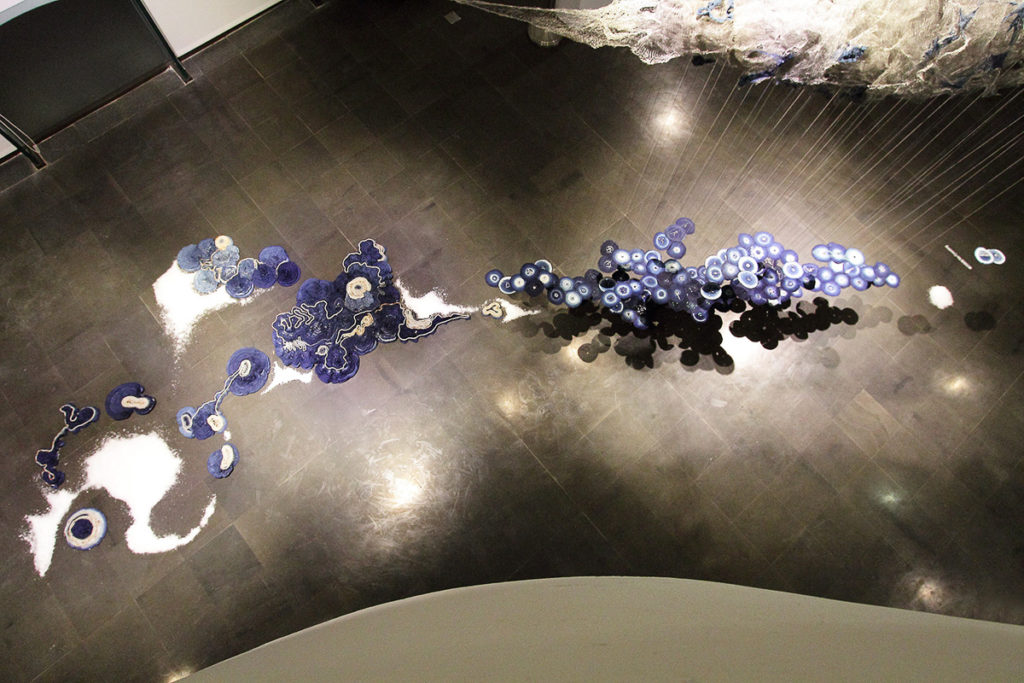
Yang Wei-lin, A Nudibranch’s Dream, 2018, Budding wheels, indigo dye, CDs, cotton and hemp threads, stainless steel wire, glass beads, cotton, salt, Dimensions variable
Yang Wei-lin’s installations bring together fiber art and literature, since, for the artist, weaving seems like a way to write. Amidst the complicated and the simple, Yang strings together a unique artistic rhythm which helps to bring out a rich poetic and romantic feeling for her works. For this exhibition, Yang specially created Whirlpool with fiber and blue dye, installed adjacent to the first-floor entrance. Along with A Nudibranch’s Dream, Whirlpool turns the area into a simulated intertidal zone, and includes the use of sea salt to make objects that resemble rising coastal rocks. Similarly, viewers can find elements which symbolise clouds, rain, waves, and tiny intertidal living organisms in A Nudibranch’s Dream. Indeed, when woven together, A Nudibranch’s Dream and Whirlpool become one giant fiber installation which overwhelms spectators with its poetic and romantic aura. Japanese artist, Yui Inoue, knows how to capture the non-materialistic spiritual scenes of our everyday lives to reveal the softness of the human heart and soul. The Origin of Delight is a large installation hung from the ceiling in the center’s hall. The main installation is hung adjacent to a large glass wall so that sunlight may penetrate its fibers. This makes the artwork’s orange graphics, as if the sunshine, curtains, and window frames, to have an obscure, semi-transparent texture, similar to curtains at a window being penetrated by the morning sun. Another piece of Yui Inoue’s art is Feel Like I’m Dreaming, which is a human-shaped structure made with metal threads. Fixed in mid-air in the first-floor exhibition space, the figure seems to be flying. This suggests an inspired state of mind, as light as the floating body.
Women artists of the world
For 50 years, since the late 1960s, women’s art has evolved alongside the feminist movement. The women artists of today adopt a wider range of creative themes and mediums. While in the past they have focused solely on gender issues, today they look at all aspects of life, such as the living environs, nature, food culture, politics, ethnicity and identity, cultural differences, and mothers and family. In addition, thanks to the convenience of global transportation systems and fast-paced online networks, women artists are now able to exchange ideas much more frequently. This has made their artworks more diverse and sophisticated, while their devotion to art indicates that women have endless creative power. Across national boundaries, women artists around the world have turned both their personal experiences and our universal experiences into art, through an artistic language. In the future, it is expected that women artists to bring to the world more diversity of art creation, always with an experimental spirit.
The exhibition Womensemble: Creating Female Subjectivity in Art was held at National Taiwan Craft Research and Development Institute, Taipei Branch, Taiwan, on 11 June to 4 August 2019. The title of the exhibition is an amalgamation of the words “women” and “ensemble”, suggesting the power created by the gathering and connection of women artists.
Author
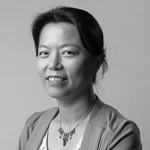 Ming Turner is an Associate Professor in the Institute of Creative Industries Design at National Cheng Kung University in Taiwan, and she is also the Head of Visual Arts of the University Art Center. She is currently the chairperson of Taiwan Women’s Art Association. She was awarded her PhD in Art History and Theory at Loughborough University, UK in 2008, and is also a curator who has completed more than thirty curatorial projects in Taiwan, China, Germany and the UK. She can be contacted via mingturner@mail.ncku.edu.tw
Ming Turner is an Associate Professor in the Institute of Creative Industries Design at National Cheng Kung University in Taiwan, and she is also the Head of Visual Arts of the University Art Center. She is currently the chairperson of Taiwan Women’s Art Association. She was awarded her PhD in Art History and Theory at Loughborough University, UK in 2008, and is also a curator who has completed more than thirty curatorial projects in Taiwan, China, Germany and the UK. She can be contacted via mingturner@mail.ncku.edu.tw


